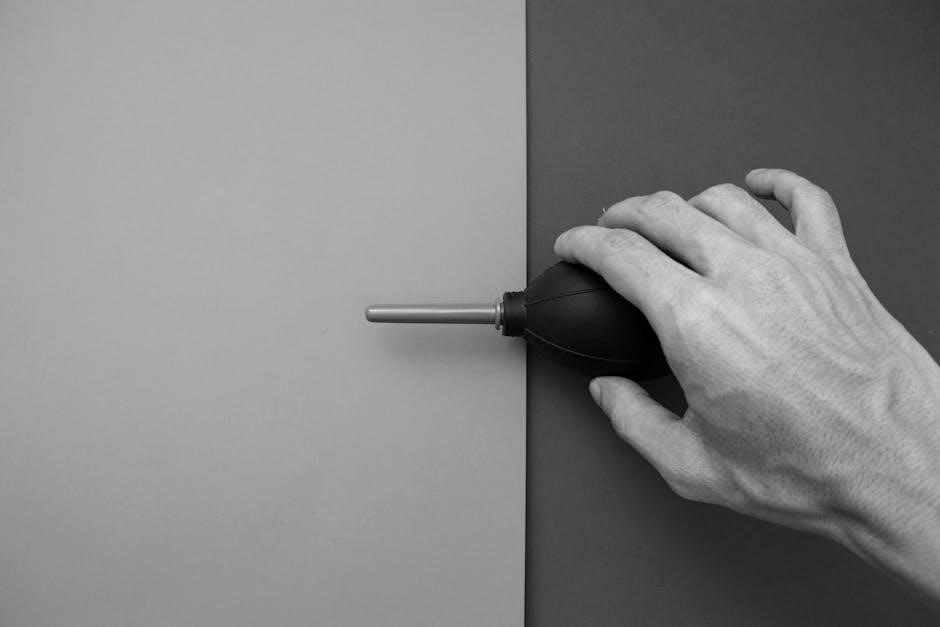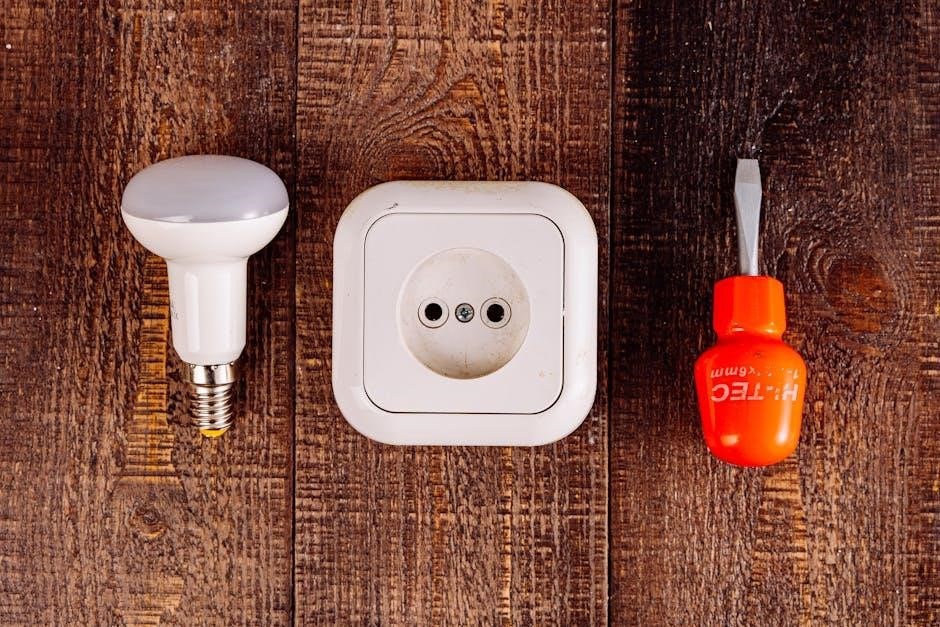DEWALT 3800 PSI Pressure Washer Manual: A Comprehensive Guide
This manual provides essential guidance for operating and maintaining your DEWALT 3800 PSI pressure washer, ensuring optimal performance and longevity for professional results.
Welcome to the world of powerful cleaning with your DEWALT 3800 PSI Pressure Washer! This robust machine is engineered to tackle a wide range of cleaning tasks, from delicate surfaces to heavy-duty grime. Designed with the professional in mind, it maximizes efficiency by eliminating trips to the pump and the hassle of fuel mixing.
This pressure washer minimizes maintenance needs and operates with impressively low noise levels. DEWALT prioritizes delivering workhorse solutions – tools, accessories, and dedicated service – to instill confidence even in the toughest jobsite conditions. This manual will guide you through safe operation, proper maintenance, and troubleshooting, ensuring years of reliable performance. Register your tool with MyDEWALT to protect your investment!
Understanding the Key Features
The DEWALT 3800 PSI Pressure Washer boasts several key features designed for performance and convenience. Its high-pressure output effectively removes dirt, grime, and stains from various surfaces. The battery-operated design, part of the 20V MAX system, offers cordless freedom and reduced maintenance compared to gas-powered models.
Explore a wide range of DEWALT accessories, including batteries and chargers, to enhance your cleaning capabilities. This tool is optimized for cutting, grinding, sanding, and more. DEWALT’s commitment to professional tools ensures durability and reliability. Find a local retailer to purchase additional accessories and experience the power of DEWALT firsthand.

Safety Precautions & Operating Instructions
Prioritize safety by carefully reviewing all guidelines before operation. Proper use, including electrical safety and water supply connections, ensures a safe experience.
General Safety Rules
Always read and understand this manual before operating the DEWALT 3800 PSI pressure washer. Maintain a safe working distance and avoid directing the spray at people, animals, or electrical connections. Wear appropriate safety gear, including eye protection and closed-toe shoes.
Never modify the pressure washer in any way, and ensure all connections are secure before use. Be mindful of the high-pressure spray and its potential to cause injury. Do not operate the machine if damaged, and disconnect the power supply before servicing. Keep children and bystanders away from the operating area.
Follow all local safety regulations and guidelines. Proper handling and awareness are crucial for preventing accidents and ensuring a safe working environment.
Electrical Safety Guidelines
Ensure the power source matches the voltage requirements of your DEWALT 3800 PSI pressure washer. Use a properly grounded outlet and avoid using extension cords unless absolutely necessary; if used, ensure it’s heavy-duty and rated for outdoor use. Never operate the pressure washer with a damaged power cord or plug.
Avoid operating in wet conditions or near standing water to prevent electric shock. Do not touch the plug with wet hands. Always disconnect the power supply before performing any maintenance or repairs. Inspect the power cord regularly for damage and replace if needed.
Proper electrical safety is paramount to prevent hazards and ensure safe operation of your pressure washer.
Water Supply Requirements
Your DEWALT 3800 PSI pressure washer requires a consistent water supply of at least 20 PSI and 4 gallons per minute (GPM). Ensure the water source is clean and free of debris to prevent damage to the pump. A garden hose with a minimum diameter of ½ inch is recommended for optimal performance.
Avoid drawing water from sources containing chemicals or flammable liquids. Always fully purge the hose of air before starting the pressure washer. If the water supply is insufficient, the pressure washer may not operate correctly or could sustain damage.
Proper water supply is crucial for efficient and safe operation.
Pressure Adjustment & Nozzle Selection
The DEWALT 3800 PSI pressure washer features adjustable pressure settings to suit various cleaning tasks. Begin with a lower pressure setting and gradually increase it as needed to avoid damaging surfaces.
Nozzle selection is critical for achieving optimal cleaning results. Different nozzles provide varying spray patterns – from a wide fan for general cleaning to a concentrated stream for stubborn dirt. Always use the appropriate nozzle for the surface you are cleaning;
Refer to the nozzle chart for guidance. Incorrect nozzle selection can lead to ineffective cleaning or surface damage.

Assembly & Setup
Proper assembly is crucial for safe and effective operation. This section details unboxing, component identification, hose attachment, water source connection, and initial startup procedures.
Unboxing and Component Identification
Carefully unpack your DEWALT 3800 PSI pressure washer and verify all components are present. The box should contain the pressure washer unit, high-pressure hose, spray gun, various nozzles, a detergent tank, and this user manual. Inspect each part for any shipping damage before proceeding.
Familiarize yourself with the key components: the motor housing, pump, water inlet, high-pressure outlet, and control panel. Refer to the parts diagram (detailed later in this manual) for a visual guide. Ensure you have all necessary accessories, including any quick-connect fittings or adapters. Retain the packaging for potential future transport or warranty claims. Contact DEWALT Customer Care at 1-800-433-9258 if any parts are missing or damaged.
Attaching Hoses and Nozzles
Begin by securely connecting the high-pressure hose to both the pressure washer outlet and the spray gun. Ensure a tight, leak-proof connection by hand-tightening the fittings. Next, select the appropriate nozzle for your cleaning task – different nozzles offer varying spray patterns and intensities.
Attach the chosen nozzle to the spray gun, again ensuring a secure fit. The nozzles typically click into place. Always double-check all connections before powering on the unit. Refer to the ‘Pressure Adjustment & Nozzle Selection’ section for guidance on choosing the correct nozzle. For assistance, visit https://support.dewalt.com/hc/en or call 1-800-433-9258.
Connecting to a Water Source
Before operation, connect the pressure washer to a reliable water supply. Ensure the water source provides at least the minimum flow rate specified in the ‘Water Supply Requirements’ section. Attach the water inlet adapter to a standard garden hose and then to the pressure washer’s water inlet.
Fully open the water supply valve to allow water to flow freely. Check for any leaks at the connections. Proper water flow is crucial for optimal performance. For detailed instructions and troubleshooting, consult the online resources at https://support.dewalt.com/hc/en or contact DEWALT Customer Care at 1-800-433-9258.
Powering On and Initial Startup
Before powering on, double-check all connections – water supply, nozzles, and hoses – for secure attachment. Ensure the pressure washer is placed on a stable, level surface. Plug the power cord into a grounded outlet, verifying it matches the voltage requirements.
Turn the power switch to the ‘ON’ position. Allow the unit to prime, which may take a few moments. Initially, operate the pressure washer with a low-pressure nozzle to bleed air from the system. For assistance or if the unit fails to start, contact DEWALT Customer Care at 1-800-433-9258 or visit https://support.dewalt.com/hc/en.

Operation & Maintenance
Proper operation and consistent maintenance are crucial for maximizing the lifespan and performance of your DEWALT 3800 PSI pressure washer.
Starting and Stopping the Pressure Washer

Before starting, ensure all connections are secure – water supply, hose, and nozzle. Verify the power switch is in the “OFF” position. Connect the pressure washer to a grounded outlet. Turn the power switch to “ON” and allow the unit to prime, which may take a few moments. Once primed, the engine should start.
To stop, release the trigger gun first. Then, turn the power switch to the “OFF” position. Disconnect the water supply and drain any remaining water from the pump and hoses to prevent freezing and corrosion. Always allow the engine to cool down before storing or performing maintenance.
Proper Spraying Techniques
Maintain a safe distance from the surface – start with a wider nozzle and greater distance, gradually decreasing for more focused cleaning. Always spray with a sweeping motion, avoiding prolonged focus on one spot to prevent damage. For stubborn dirt, move the nozzle closer, but exercise caution.
Hold the wand at a slight angle to the surface to lift dirt effectively. Rinse from top to bottom, allowing gravity to assist the cleaning process. Regularly check the water flow and adjust pressure as needed. Remember to always wear appropriate safety gear, including eye protection.
Cleaning Different Surfaces
For delicate surfaces like painted wood, utilize a wider nozzle (40-degree) and lower pressure settings to avoid damage. Concrete and brick can withstand higher pressure, employing a narrower nozzle (25-degree) for effective grime removal. Always test a small, inconspicuous area first to assess compatibility.
Vehicles require a gentle approach; use a wide nozzle and maintain a safe distance. Avoid spraying directly at tires or sensitive components. Rinse thoroughly after detergent application. Wood decks benefit from a consistent sweeping motion, preventing streaking. Remember to adjust pressure based on the surface material’s resilience.
Detergent Usage & Soap Nozzle
To utilize detergents effectively, attach the dedicated soap nozzle – typically white in color – to your DEWALT pressure washer. Fill the detergent tank with a DEWALT-approved detergent, ensuring it’s designed for pressure washer use. Adjust the detergent flow rate using the built-in dial, starting with a lower setting and increasing as needed.
Apply detergent evenly across the surface, allowing sufficient dwell time for it to break down dirt and grime before rinsing. Avoid using harsh chemicals or household cleaners, as they can damage the unit. Rinse thoroughly with clean water to remove all detergent residue, preventing streaking or discoloration.

Troubleshooting Common Issues
This section details solutions for typical problems, like startup failures, low pressure, engine stalls, and water leaks, ensuring quick resolution and continued operation.
Pressure Washer Won’t Start
If your DEWALT 3800 PSI pressure washer fails to start, first verify the power source and ensure a secure connection; Check the circuit breaker or fuse box. Confirm the water supply is fully on, as many models have a low-water shutoff feature. Inspect the on/off switch for proper functionality.
Additionally, examine the fuel level (for gas-powered models) and ensure fresh fuel is being used. A clogged air filter can also prevent starting; clean or replace it as needed. If the issue persists, contact DEWALT Customer Care at 1-800-433-9258 for further assistance or consult online resources at https://support.dewalt.com/hc/en.
Low Pressure Output
Experiencing low pressure with your DEWALT 3800 PSI pressure washer? Begin by checking for kinks or obstructions in the high-pressure hose. Ensure the nozzle isn’t clogged – remove and clean it thoroughly. Verify the water supply provides adequate volume and pressure; a restricted inlet will reduce output.
Also, confirm you’ve selected the appropriate nozzle for the task. A wider nozzle delivers lower pressure. If problems continue, inspect the unloader valve for proper operation. For detailed troubleshooting or support, reach out to DEWALT Customer Care at 1-800-433-9258 or visit https://support.dewalt.com/hc/en.
Engine Stalling
If your DEWALT 3800 PSI pressure washer engine stalls during operation, first check the fuel level and ensure fresh fuel is being used. A dirty air filter can restrict airflow, causing stalling – clean or replace it as needed. Inspect the spark plug for fouling and replace if necessary.
Low oil levels can also trigger engine shutdown as a safety measure; verify and top up the oil. For persistent stalling issues, contact DEWALT Customer Care at 1-800-433-9258 or consult online resources at https://support.dewalt.com/hc/en for expert assistance and potential repair options.
Leaking Water
Discovering water leaks with your DEWALT 3800 PSI pressure washer requires immediate attention. First, inspect all hose connections – ensure they are tightly secured. Check the high-pressure hose for any cracks or damage and replace if found. Examine the pump and spray gun for leaks around seals or fittings.
If leaks persist, contact DEWALT Customer Care at 1-800-433-9258 or utilize the online support at https://support.dewalt.com/hc/en. Ignoring leaks can lead to reduced pressure and potential damage; prompt attention ensures optimal performance and longevity of your equipment.

Parts & Maintenance Details
Explore detailed diagrams of your DEWALT 3800 PSI pressure washer’s components, alongside a schedule for regular upkeep to maximize its lifespan and efficiency.
DEWALT 3800 PSI Pressure Washer Parts Diagram
Understanding the intricate components of your DEWALT 3800 PSI pressure washer is crucial for effective maintenance and repairs. This detailed parts diagram illustrates each assembly, from the high-pressure pump and engine to the nozzles, hoses, and trigger gun. Refer to this diagram when ordering replacement parts or performing disassembly for servicing.
Key components identified include the motor, pump, unloader valve, high-pressure hose, spray gun, nozzles, and detergent tank. Proper identification ensures you select the correct replacement part. Always use genuine DEWALT replacement parts to maintain performance and warranty validity. A clear understanding of these parts will aid in troubleshooting and extending the life of your pressure washer.
Regular Maintenance Schedule
Maintaining your DEWALT 3800 PSI pressure washer is vital for consistent performance and longevity. Implement a routine maintenance schedule to prevent issues and extend its lifespan. After each use, inspect hoses and connections for damage, and rinse off any debris.
Every 25 hours of operation, check the oil level and change it as needed. Clean or replace the air filter and fuel filter. Annually, inspect the high-pressure hose for wear and tear, and thoroughly clean the detergent tank. Following this schedule ensures optimal operation and minimizes potential downtime, keeping your tool ready for any task.
Oil Change Procedures
Regular oil changes are crucial for maintaining your DEWALT 3800 PSI pressure washer’s engine health. First, ensure the engine is warm but not hot. Locate the oil drain plug and position a suitable container underneath. Carefully remove the plug, allowing the old oil to drain completely.
Once drained, replace the plug and tighten securely. Locate the oil fill cap and add the recommended oil type and quantity (refer to your manual). Check the oil level with the dipstick, ensuring it’s within the specified range. Properly dispose of the used oil at a designated recycling center.
Filter Cleaning & Replacement
Maintaining clean filters is vital for optimal pressure washer performance. Regularly inspect both the water inlet filter and the engine air filter. The water inlet filter, typically located where the hose connects, should be removed and rinsed free of debris under running water.
For the engine air filter, carefully remove it and tap gently to dislodge loose dirt. If heavily soiled, replace it with a new filter of the correct type. Ensure a proper seal when reinstalling both filters. A clogged filter restricts airflow and water flow, reducing efficiency and potentially damaging the engine.

Customer Support & Warranty Information
DEWALT provides comprehensive support via phone (1-800-433-9258) and online (https://support.dewalt.com/hc/en), alongside MyDEWALT registration benefits.
Contacting DEWALT Customer Care (1-800-433-9258)
For direct assistance with your DEWALT 3800 PSI pressure washer, reach out to DEWALT Customer Care at 1-800-433-9258. Their dedicated team is available to address your questions, concerns, and provide troubleshooting guidance. Operational hours are conveniently extended, offering support seven days a week from 7:00 AM to 11:00 PM Eastern Time.
Whether you require help with assembly, operation, maintenance, or warranty claims, the customer care representatives are equipped to assist you. Be prepared to have your model number and purchase date readily available to expedite the support process. DEWALT prioritizes customer satisfaction and strives to deliver prompt and effective solutions.

Online Support Resources (https://support.dewalt;com/hc/en)
DEWALT provides a comprehensive suite of online support resources at https://support.dewalt.com/hc/en, designed to empower users with self-service solutions for their 3800 PSI pressure washer. This platform hosts a detailed knowledge base, frequently asked questions (FAQs), and troubleshooting guides covering a wide range of topics.
You can access downloadable manuals, parts diagrams, and helpful videos demonstrating proper operation and maintenance procedures. The online portal also features a convenient contact form for submitting inquiries directly to DEWALT’s customer service team. Explore these resources to quickly find answers and resolve common issues, maximizing your pressure washer’s performance and lifespan.
MyDEWALT Registration & Benefits
Joining MyDEWALT is a valuable step in protecting your investment in your DEWALT 3800 PSI pressure washer. Registration allows you to securely store proof of purchase, simplifying warranty claims if needed. As a member, you’ll receive exclusive access to product updates, special offers, and promotions tailored to your tools.
Furthermore, MyDEWALT provides a platform to rate and review products, contributing to the DEWALT community and helping others make informed decisions. Stay informed about the latest DEWALT tools and accessories, ensuring you have the resources to tackle any job efficiently. Register today to unlock these benefits!
Warranty Coverage Details
DEWALT stands behind the quality of its 3800 PSI pressure washer with a comprehensive warranty program. Specific coverage details vary based on the region and date of purchase, so reviewing your product documentation is crucial. Generally, the warranty covers defects in materials and workmanship for a defined period from the original purchase date.
This warranty doesn’t cover damage resulting from misuse, abuse, normal wear and tear, or unauthorized repairs. To initiate a warranty claim, retain your proof of purchase and contact DEWALT Customer Care at 1-800-433-9258 for guidance through the process.

DEWALT Power Tool Ecosystem
DEWALT offers a robust ecosystem of 20V MAX tools, accessories, and batteries, complementing your pressure washer and providing solutions for diverse jobsite needs;
20V MAX Tools Overview
DEWALT’s 20V MAX system is a cornerstone of their power tool lineup, offering cordless convenience and powerful performance across a vast range of applications. These tools combine lithium-ion batteries with superior ergonomics and, increasingly, brushless motors for extended runtime and durability.
The system’s versatility allows professionals to tackle cutting, grinding, sawing, riveting, and sanding tasks efficiently. High-capacity battery packs further enhance productivity, minimizing downtime for recharging. Integrating 20V MAX tools alongside your DEWALT 3800 PSI pressure washer creates a comprehensive, portable, and powerful toolkit for any jobsite. Explore the full range to optimize your workflow and maximize efficiency.
DEWALT Accessories (Batteries, Chargers, etc.)
DEWALT offers a comprehensive selection of accessories designed to enhance the performance and versatility of your power tools, including those compatible with the 20V MAX system. This includes a variety of batteries and chargers to keep you powered on the job, alongside specialized drill, sanding, and fastening accessories.
Choosing genuine DEWALT accessories ensures optimal compatibility and durability. Properly maintaining your batteries and utilizing the correct chargers maximizes their lifespan and efficiency. Investing in quality accessories alongside your DEWALT 3800 PSI pressure washer ensures you have the right tools for every task, boosting productivity and delivering professional results.
Finding a DEWALT Retailer
DEWALT products, including accessories and the 3800 PSI pressure washer, are widely available through a network of authorized retailers. You can easily locate a DEWALT dealer near you by utilizing the store locator feature on the official DEWALT website. This tool allows you to search by zip code or city to pinpoint the closest stores carrying DEWALT tools.
Retailers often include home improvement centers, hardware stores, and specialized tool suppliers. Visiting a physical store allows you to examine products firsthand and receive expert advice from knowledgeable staff. Purchasing from authorized retailers guarantees genuine DEWALT quality and access to warranty support.
DEWALT’s Commitment to Professional Tools
DEWALT consistently designs and optimizes professional workhorse solutions, encompassing tools, accessories, and comprehensive service, to instill confidence even in the most demanding jobsite conditions. This dedication extends to the 3800 PSI pressure washer, engineered for durability and powerful cleaning performance.
DEWALT prioritizes innovation, continually refining its products based on feedback from professionals. They strive to deliver tools that withstand rigorous use and provide reliable performance, day after day. This commitment ensures that DEWALT remains a trusted partner for professionals seeking quality and dependability.



































